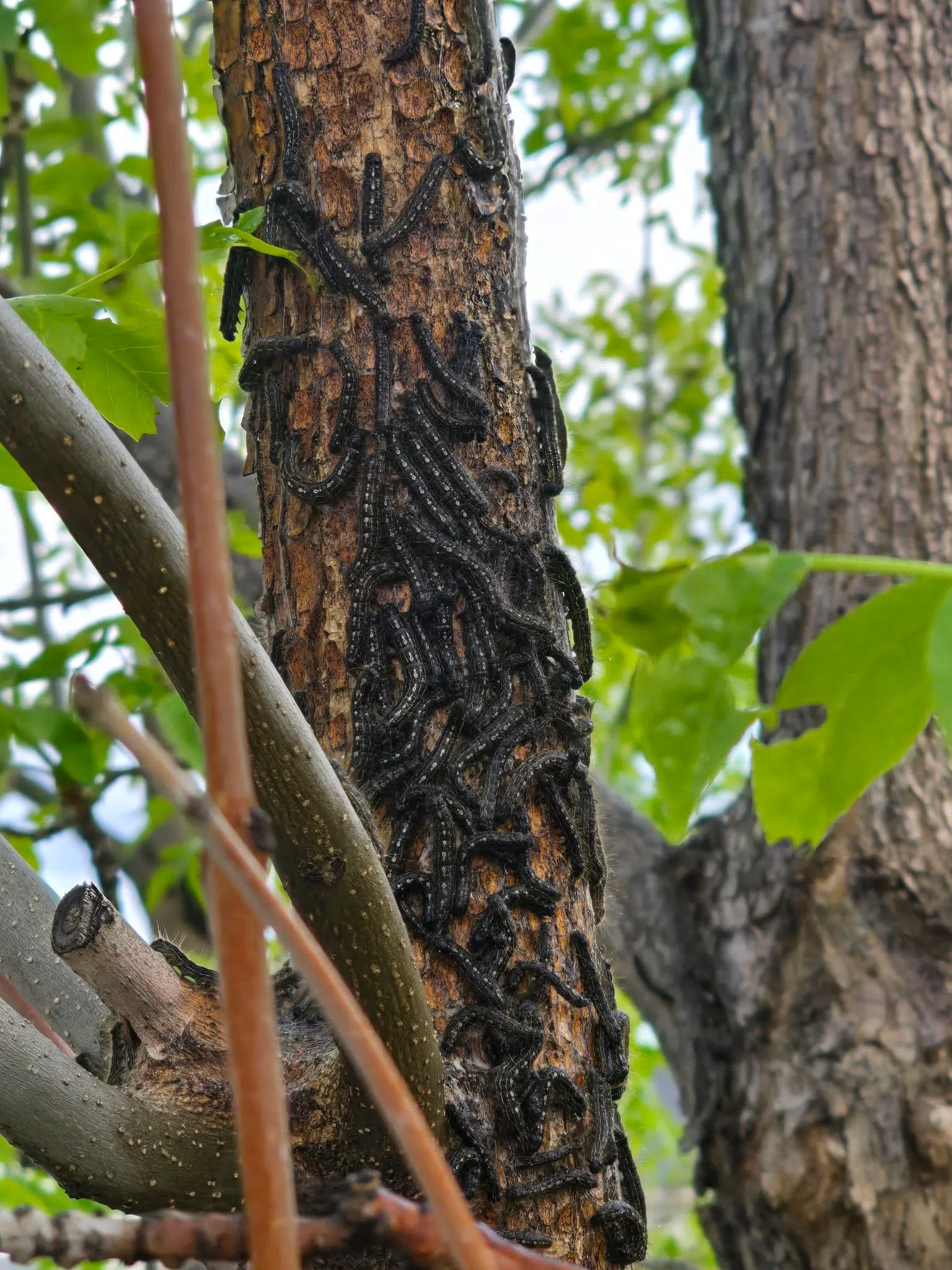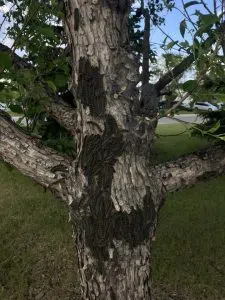
Tent Caterpillars blanket tree, image by Tristan Chandel
Forest Tent Caterpillar Outbreak Crawls Across Fort McMurray Wood Buffalo
FORT McMURRAY, AB. — Brown and green caterpillars with white spots crawling up trees, clinging to decks, and devouring aspen leaves on trees are a familiar sight across Fort McMurray Wood Buffalo this spring.
The region is in the middle of a forest tent caterpillar outbreak, with residents spotting hundreds of the wriggling insects in their yards and forested areas. When on the move, some people have seen entire roadways covered by the 5 cm long wigglers. But ,while the invasion might look alarming, experts say there’s no need to panic.
“This kind of outbreak happens about once every ten years,” says Dr. Maya Evanden, a biological sciences professor and forest entomologist at the University of Alberta. “It’s a normal part of the boreal forest ecosystem, and for the most part, the trees will recover.”
The caterpillars are easily identified by their blue side bands and white, keyhole-shaped spots down their backs. They are notorious for stripping trees of their leaves in just a few weeks. Their preferred meal in this region is trembling aspen, but when food runs short, they’ll move on to shrubs and plants near the forest floor.
“Outbreaks can last anywhere from two to five years,” Evanden explains. “During this time, they can completely defoliate a tree. But trees usually regrow their leaves the same season, unless they’ve been stressed by other factors like drought or repeated defoliation.”
Though their feeding frenzy can leave forests looking ghostly and bare, forest tent caterpillars don’t typically cause long-term ecological damage. In fact, Evanden says these insects play an important role in nutrient cycling. She says their droppings return organic material to the forest floor and they also serve as important food for birds, wasps, and other insects.
“Forest tent caterpillars are like tiny recyclers,” she says. “They feed heavily, poop a lot, and then eventually cocoon and transform into moths. All of that is part of a cycle that benefits the forest.”
Once mature, the caterpillars spin silky cocoons and transform into moths. The moths themselves are non-feeding adults whose sole purpose is to mate and lay eggs for the next generation. Moths typically emerge in late June and lay their eggs in bands around tree twigs.
If the infestation seems particularly bad this year, it’s because these population surges move through Canada’s boreal forest like waves. “Synchrony of forest tent caterpillar populations varies temporally and in proportion to outbreak peak,” Evanden says.
For concerned homeowners, she recommends using natural pesticides containing Bacillus thuringiensis or “BK”, a bacteria that targets and kills caterpillars but is safe for other animals and plants.

Forest Tent Caterpillar infestation, image by Carol Fougere
“There are also physical methods,” she adds. “You can remove egg bands from trees in the fall or power wash larvae and cocoons off surfaces. The key is targeting them before they pupate.”
While some residents might find the creatures unsettling, Evanden encourages people to look a little closer.
“They’re actually really fascinating,” she says. “They’re gregarious — meaning they hang out together — and they communicate using trail pheromones to stick with their group. And the fact that they get all the energy they need for adulthood during the caterpillar stage. That’s wild biology in action.”
With temperatures warming, Evanden says residents can expect the caterpillars to begin cocooning soon. “Once they pupate, the chewing stops. In a few weeks, the forest will start to green up again.”
Until then, brace for a few more weeks of squishy sidewalks, som eleafless trees, and a whole lot of caterpillar poop.
But rest assured, nature knows what it’s doing.











Comments